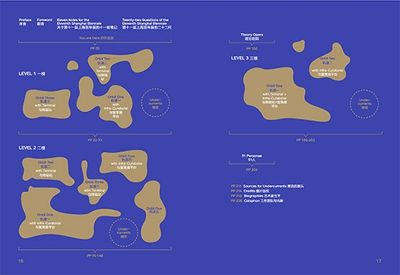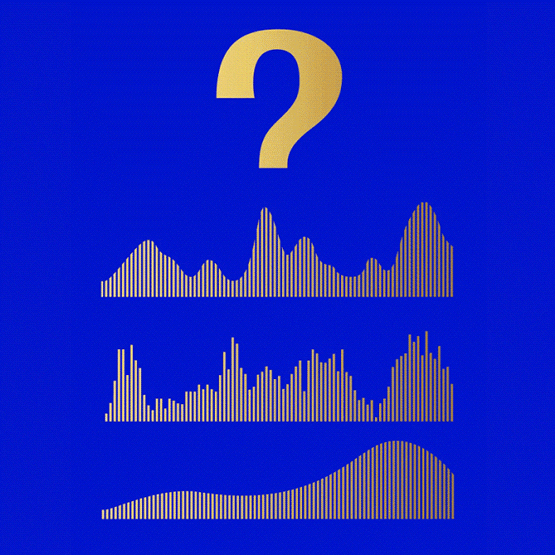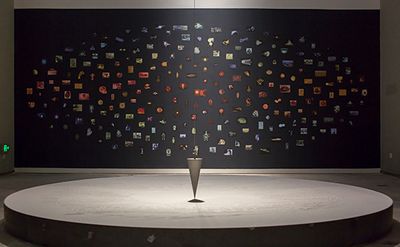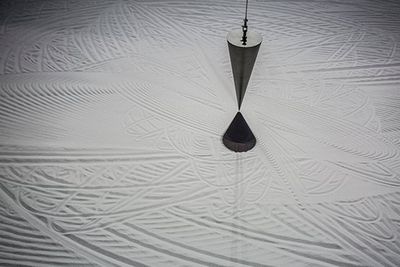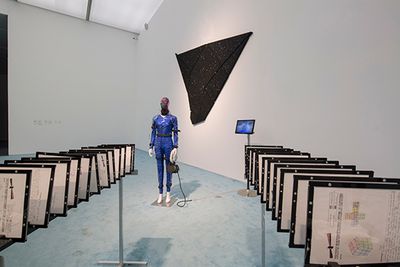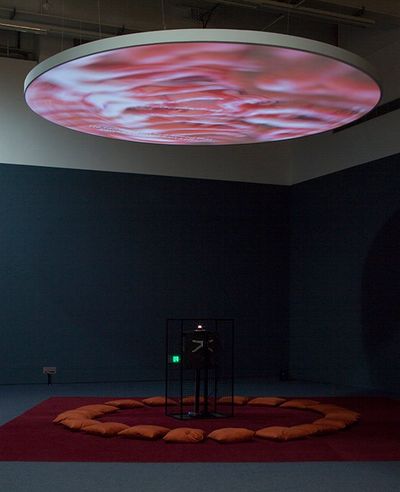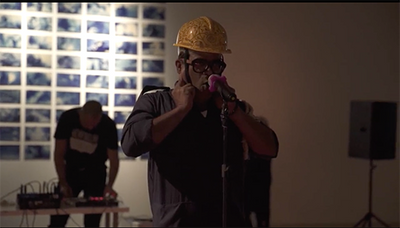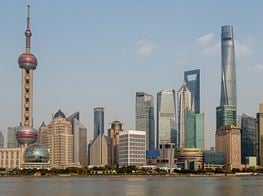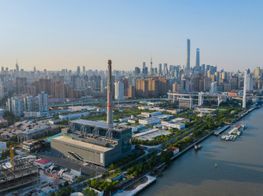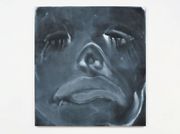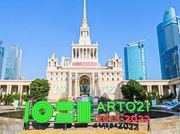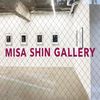Reading a biennale online: a virtual response to the 11th Shanghai Biennale
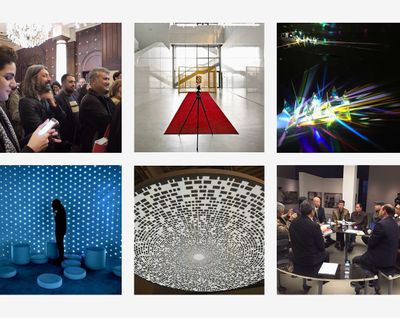
Instagram feed of 11th Shanghai Biennale account (@shanghaibiennale).
Today, a significant range of discursive thinking around biennales takes place without people physically seeing them, given the large number of biennales that are operative worldwide and the varying abilities people have to visit them. The extensive use of social media, personal blogs, and online and print-based reportage all help to remedy physical absences, offering perspectives around these events as they are viewed from afar in different parts of the world. An awareness of this reality is reflected in the way such events approach their online presence. Now, like never before, biennale organisations, curators and artists are increasingly emphasising the need for active feeds on social media. These feeds are extended and diversified by the images generated by visitors using hashtags created around the exhibitions.
Such shifts in circulation and spectatorship raise a question about the increasingly global nature of the art world and the politics of seeing that exist therein. What does it mean to view a biennale online, and what understanding of a biennale could one produce from this process? These are the questions I posed to myself when I could not physically experience and review the 11th Shanghai Biennale, which runs from 12 November 2016 to 12 March 2017, for purely bureaucratic reasons. The challenge was a fascinating exercise of information gathering from various feeds and threads, including guidebooks, Instagram feeds, reviews, official websites, as well as email correspondences with curators, artists, and the Biennale team.
Presenting 92 artists and collectives from different parts of the world, the 11th Shanghai Biennale (SHB11), Why Not Ask Again: Arguments, Counter-Arguments, and Stories, adopts a formal structure based on planetary orbits as a way to 'emphasise the possibilities of South-South dialogue within the current scenario of a highly interconnected world.' This conceptual structure, as the Biennale's curators Raqs Media Collective explicate in their press releases, was inspired by two sets of triangulations. The first is the 1974 film Jukti Takko Aar Gappo (translated to Reason, Debate and a Story in English) by renowned Bengali filmmaker Ritwik Ghatak, which narrates the story of a wandering alcoholic intellectual who meets a fugitive peasant and a group of young rebels in the countryside. The curators interpret this figure as the artist who asks 'necessary, difficult and engaging questions', with Ghatak's film title conceptually rephrased within the subtitle of the SHB11. The second triangulation is the science fiction novel The Three-Body Problem by Chinese writer Liu Cixin, which refers to the concept of the three-body problem in physics, in which the otherwise stable gravitational interaction between two objects in space becomes random and unpredictable when a third object is introduced.
These two triangulations amplify biennale-making as a form of asking questions, in which all actors who fall into the biennale's orbit become part of its present and future discussion. Berlin-based designer Ariane Spanier Studio translated this curatorial vision into a graphic form for wider circulation by devising the 'question mark' as the principal publicity element of the Biennale. On their Instagram feed, the design studio made more than one direct reference to The Three-Body Problem, with the most peculiar one among them showing three floating circles that intersect at regular intervals.
The orbital mechanics of The Three-Body Problem also inspired the spatial structure of SHB 11, with sections referred to as 'Orbits' interlaced with 'Terminals' and 'Infra-Curatorial' layers across the four levels of the Power Station of Art (PSA), the main venue of the exhibition. Designing this spatial concept, architects Prasad Shetty and Rupali Gupte responded to a specific emphasis from the curators that the architecture of each level of the PSA should facilitate dialogues between various works in the Biennale. As they noted in email conversation, the exhibition's architecture was conceived as a series of folds to circumnavigate and play with the pre-existing architecture of the PSA. Additions and improvisations were considered 'silent listeners' to the artworks positioned throughout the exhibition's various layers.
Within this spatial design, Orbits define the placement of different artworks across four levels of the PSA by artists including Lee Mingwei, Christian Thompson, Taus Makhacheva, Patty Chang and Tomás Saraceno, among others. Within these Orbits are Terminals, which present a wider body of work by individual artists including Marjolijn Dijkman, Ivana Franke, Regina José Galindo and Mou Sen + MSG. Through this staging, the curators attempt to circumnavigate the dominant way in which artworks are experienced in a biennale, by offering a whole body of work presented as a larger installation rather than a single piece. Marjolijn Dijkman's terminal on the PSA ground floor, for instance, is called Lunar Station. It presents a series of works produced from 2015 to present, which include a large steel pendulum hung over a circular box of sand that has been one of the most frequently shared images on Instagram. The pendulum tracks and responds to lunar cycles in real time, periodically marking trajectories in the sand. In the guidebook, these Terminal installations are described as conceptually relating back to a time 'when the arts, science and philosophy made up a connected field.'
Infra-Curatorial projects are dispersed throughout SHB11's Orbits and Terminals, as curated by seven international curators who bring together different lines of inquiry from cities including Lagos, Moscow, Delhi, Hangzhou, Bangalore, Istanbul and Paris. These projects both interject and interrupt the existing structure of the exhibition, with each project designed to co-exist in the exhibition's existing architecture while responding to its provocations. New Hampshire-based Ugochukwu-Smooth C. Nzewi's project Future of Past I II and III, for instance, engages with ideas of time from an Afrofuturist perspective, and seeks to map 'the cartographies of individual and collective experiences and how they intersect with real, imagined and speculative histories'.
Future of Past I II and III is staged in three segments throughout the first, second and third levels of the PSA, and includes works by Bianca Baldi, Anawana Haloba, Sammy Baloji, Olu Oguibe, Bahar Behbahani, and Theo Eshetu. Works also include Ayodamola Tanimowo Okunseinde and Salome Asega's collaborative project Iyapo Repository (2016), a resource library assembled to affirm the voices and histories of people of African descent, which houses a collection of both digital and physical artefacts. Jefferson Pinder's work Black Portal (2015), a spaceship fashioned from abstracted glittery black panels of wood, draws reference to the intersection of black history and science fiction by alluding to Afro-futurist approaches taken in the work of musician Sun Ra and historian W. E. B. Du Bois.
Through this framework of moving parts, a peculiar relationship with time, space and mobility is created. In an email correspondence with participating artist Rasmus Nielsen of SUPERFLEX, Nielsen observes how SHB11 is inscribed with Raqs Media Collective's particular rendering of time in space. He sees this exhibition as a 'perception of engaging with "now" that lets the past walk in parallel with the future, not paying too much attention to the present.' SUPERFLEX's installation comprised of a circular ceiling projection, accompanied by a red carpet and pillows, is located on the ground floor of PSA. Titled Exchange of Pigs and Bits (2016), it is an SHB11 commission that explores the routes of globalisation and politics of outsourcing by tracing how meat from Chinese pigs ends up in Sweden, and other similarly parallel stories that seem to posit the pig as an analogy for the routes of exchange in a globalised world.
The theme of exchange is explored, too, in 'Theory Opera', another SHB11 programme that was envisioned by Raqs as an itinerant Biennale structure designed to facilitate sonic and performative situations of exchange between theory and practice. One intervention was by Hemant Sreekumar and Bhagwati Prasad, who work with sound and performance as principle points of engagement. The artists shared documentation of their recent Theory Opera event We Need to Find God (14 January 2017) on social media, allowing followers to view photos and video of the happening. Built through sonic cadence, the performance—which explored how electronic sounds, beats and manipulated voice can produce an aesthetic experience—was delivered in part by Prasad dressed in construction worker's uniform, which offered a visual reference to the PSA as a former industrial space.
The '51 Personae' project expands the axis of SHB11 further by widely radiating into the city of Shanghai through programming of 51 weekend events staged in various locations—from parks and banks, to book malls and reservoirs—throughout the city. The project is curated by Chen Yun of the Dinghai Qiao Mutual-Aid Society, an organisation that engages with the migrant and local histories of Shanghai. As Chen Yun elaborated in email correspondence, the project's focus has been 'to take people of Shanghai out of their regularly intersecting cultural zones into extremely new sites of the city they live in and often take for granted.' Fifty-one people from varied professions and ethnic backgrounds based in Shanghai have been invited to lead these events. Liu Jie, a veteran of the Lane 449 Soccer Team, who now teaches soccer, hosted a happening involving the live commentary of the China versus Qatar 2016 FIFA World Cup Qualification match in Mandarin and Shanghainese. Zheng Limin, an employee of the Qingcaoscha Reservoir, a protector of birds and lover of contemporary art, staged a long-distance run through the reservoir's dam, intended to give 'the artificial construction of the dam a dimension of human speed'. These experiences create a strong interpersonal layer in SHB11, facilitating relationships not only among different communities in Shanghai, but between international visitors and those like myself who could only experience the project through the 51 Personae website and guidebook.
Indeed, it has been an engaging challenge to follow the 11th Shanghai Biennale Why Not Ask Again from afar. Though I did experience some FOMO, I can argue that in the case of this Biennale, I was able to grasp the different curatorial layers, architectural interventions and artist projects due to a strong social media presence and in-depth details that were made available on the Biennale's website and other online sources. Because the contemporary art industry is so connected online, I was also able to follow the project through friends and colleagues who were involved personally, or were physically visiting the Biennale themselves.
In a time where the form of the biennale is in constant question for its repetitive frameworks of presentation, Raqs' approach for SHB11, from what I am able to grasp, has generated a diversity of approaches that combine in asking again what the form of the biennale itself might mean, and how such an exhibition might insert itself back into the cultural fabric of Shanghai to trigger completely new sites of re-imagining. While adhering to some of the pressures that the biennale structure imposes on a curatorial imagination, often in scale and demand for spectacle, SHB11 appears to have orchestrated detours (material and conceptual) to engage with its audiences. From the design of the exhibition as Orbits and Terminals, the sub-imaginaries within the Biennale presented by the Infra-Curatorial projects, the recurring noises and signals of Theory Opera, to the outward radiations into the urban landscape of Shanghai by the 51 Personae project, this edition of the Shanghai Biennale was an engaging site of curiosity, even for someone witnessing its many presences from afar.—[O]

